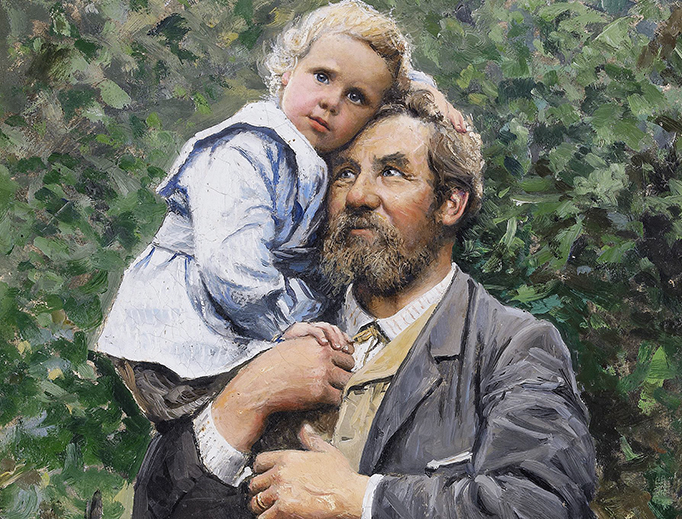What I Learned on a Walk With My Little Boy

Long, long ago--when the giant man in my house named Peter (who just turned 21) was only 3 and his kid brother Sean was only 2--it was a daily occurrence that (barring rain) I would be summoned "owside" as my two year old Sean said and bidden to take his and Peter's hands and get going. It didn't really matter where we went as long as we saw certain important sights.
The first important sight was "the doggie by the gate" (a creature sufficient to satiate Sean's fascination with dogs yet safely locked behind a gate at the end of a 50 foot driveway and therefore capable of causing thrills without terror). The second critical sight was "the fire hydrant" which Peter thought intensely interesting every time we passed it. Then there were the various other amazements to be gleaned, such as a handful of gravel (it was absolutely essential to acquire at least one in the course of the walk so we could dribble it out on the ground as we go), any and all puddles, and, of course, the exhilaration of balancing on the edge of the sidewalk.
All of this is, in the grand scheme of geopolitics and world history what most people would call "small beer." But to this, I reply, "So what?" Who says Big Beer tastes good? I like the microbrews my kids (and now grandkids) came up with and feel as though I am getting in on some small yet critical secrets, unknown to the Great Powers of the world when I wander around with kidlets and we examine the sticks and stones that Higher Thought declares "ordinary."
For instance, once upon a time I asked Peter what clouds were. In the past, my teacherly nature would have been to tell Peter what clouds were, but I was suddenly seized with an impulse to let him wonder about it for a spell. He was pensive for a moment while we walked, then declared, "I think clouds are popcorn."
Interesting. And much more satisfying and festive than the dull theory that they are "condensations of H2O". I decided I wanted to know more. "What is the sky?" I asked. "It's blue for Easter" came the confident reply. "And the sun is yellow for Easter too." Trees were also, curiously, brown for Easter.
I liked these explanations much better than the conventional ones too, so I opted not to "correct" them. The wise thing to do in the presence of great insight is to bow to the fullness of the mystery, not lecture it pedantically.
And the insights were mysterious! A more prosaic soul than Peter's would muddy the water with dim, dumb questions like "How does popcorn stay up there?" But, of course, the answer that any three year old knows is, "God makes it stay up there." Cryptic? You bet. But what prophet isn't? You don't go to the Oracle at Delphi expecting an analysis of Dow Jones Industrial Averages. You go looking for insights that might have eluded the rest of the world, and such insights are nearly always cryptic, yet typically truer than mere fact.
I have come to the conclusion that the sky is blue and the sun is yellow for Easter, just as clouds are God's popcorn. Those who think they know that the sky is really blue because of light diffusion and the sun is really yellow because of nuclear fusion simply don't know how to look at things aright. They are the sort of people who insist that Romeo and Juliet is really just people in costumes talking to each other in front of a wooden stage set. They fail to see that this is not what the play is, but only what it is made of. God made the sky, sun and clouds of atoms and light waves. But he made them for Easter.
Out of the mouths of babes and sucklings, Thou hast perfected praise.













